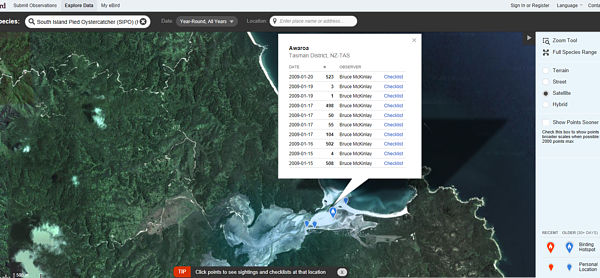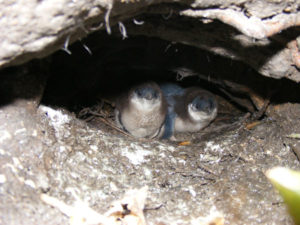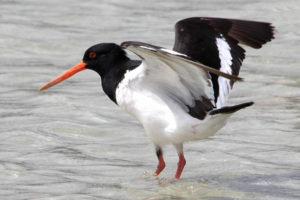Before we can hope to restore the biodiversity of Abel Tasman National Park we need to know what is already there. This knowledge can prompt questions about the distribution and abundance of each species and perhaps provide some insight into the causes of the current situation. Where do we find this information? There is precious little about the past fauna in the park and quite frankly, not a lot more information on the current situation.
Historical accounts tell us a little. Does the reference to ‘shooting dragons’ in that magnificent family history Awaroa Legacy (by Carol Dawber and Lynette Wilson) really refer to the last of the tuatara? More recent information is available in the atlases of bird distribution published by the Ornithological Society. This work presents the efforts of many keen bird watchers to record all birds from each of the 10 km × 10 km grid squares. A quick comparison between the 1985 and 2005 versions of the atlas show that kākā, kākāriki, robins and tomtits are less widespread and that mohua have disappeared completely during that period.
While Project Janszoon hopes to reverse that trend this work can be assisted so much by more information, but where to store it now that the atlas projects have finished? I strongly encourage park naturalists to use the electronic on-line system provided by eBird.

eBird screenshot
This system allows you to enter your personal observations through a submission template and archive these for any future analysis you wish to do. You are also easily able to search all records by species or location or date. Your entry of data and your searching uses an embedded version of Google Earth.
For instance, go to the “View and Explore” tab, move the map and zoom in on the Awaroa Estuary. If you now search for South Island pied oystercatcher a selection of blue balloons will show you where they were recorded, clicking on one of these balloons will give you access to all the records from that site.
A list of what you observed anywhere in the park will be useful and if we get enough of these it is not hard to draw conclusions about the distribution of species. Already a search for tomtit shows several records from the lowland part of the park whereas robins are only in the upland zone. If you are often in one part of the park (a bach owner?) then regular lists are invaluable in showing seasonal changes as well as long term trends. Try to be consistent in your effort and the rules you make for yourself—eg you might restrict yourself to a count of all waders seen on the Awaroa Spit or you might list all the species recorded in the vicinity of your bach.
I think you will find it a lot of fun and somewhat addictive as well as making a real contribution to our understanding of the park wildlife.



